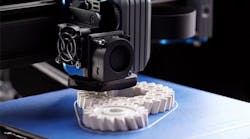New car technologies such as supercapacitors, SiC and GaN power components, switched reluctance motors, merged and structural electric components, contactless charging and harvesting heat, light and vertical movement, are all driving growth in the electric car market, according to IDTechEx.
In a new report, the firm predicts that the global sale of hybrid and pure electric cars will triple to $178.9 billion in 2024.
The report examines in-wheel motors, fuel cell cars and the transformed battery situation. In-wheel motors are at last appearing in born-electric vehicles optimized for this disruptive change, the group says. And 140 lithium-ion battery manufacturers and their changing success with EVs and changing chemistry are pushing the market forward.
Launches of production models of fuel cell cars are promised around 2015 by companies such as Hyundai, Toyota, Daimler and Tata Motors, bringing these center stage to the” contempt of competitors that consider them to be a dead end,” the group said.
Plus Tesla’s mega factory could “dwarf all of them put together.”
IDTechEx sees a gathering trend towards OEMs making their own key enabling technologies. It reveals that there are far more than the traditional three key enabling technologies now and explains their future.
Very different options for the elements of an EV are now emerging. It may be possible to have flexible batteries over the skin of the car in due course. Sometimes such laminar batteries permit faster charging and greater safety. In about ten years structural components - load-bearing supercapacitors and batteries will save even more space and weight in the most advanced vehicles.
Vehicle electrics will be a greater part of the cost of the vehicle as they replace hardware and give greater safety and performance. Electrics will change radically from the introduction of wide bandgap power semiconductors to printed electronics.
There is scope for energy harvesting from shock absorbers, thermoelectric harvesting which will be viable around 2017 and there will be some local harvesting for devices around the vehicle (eg Fiat vision).
And radically new functional systems with previously impossible shapes and functions will transform e-car systems beyond recognition, IDTechEx says.










